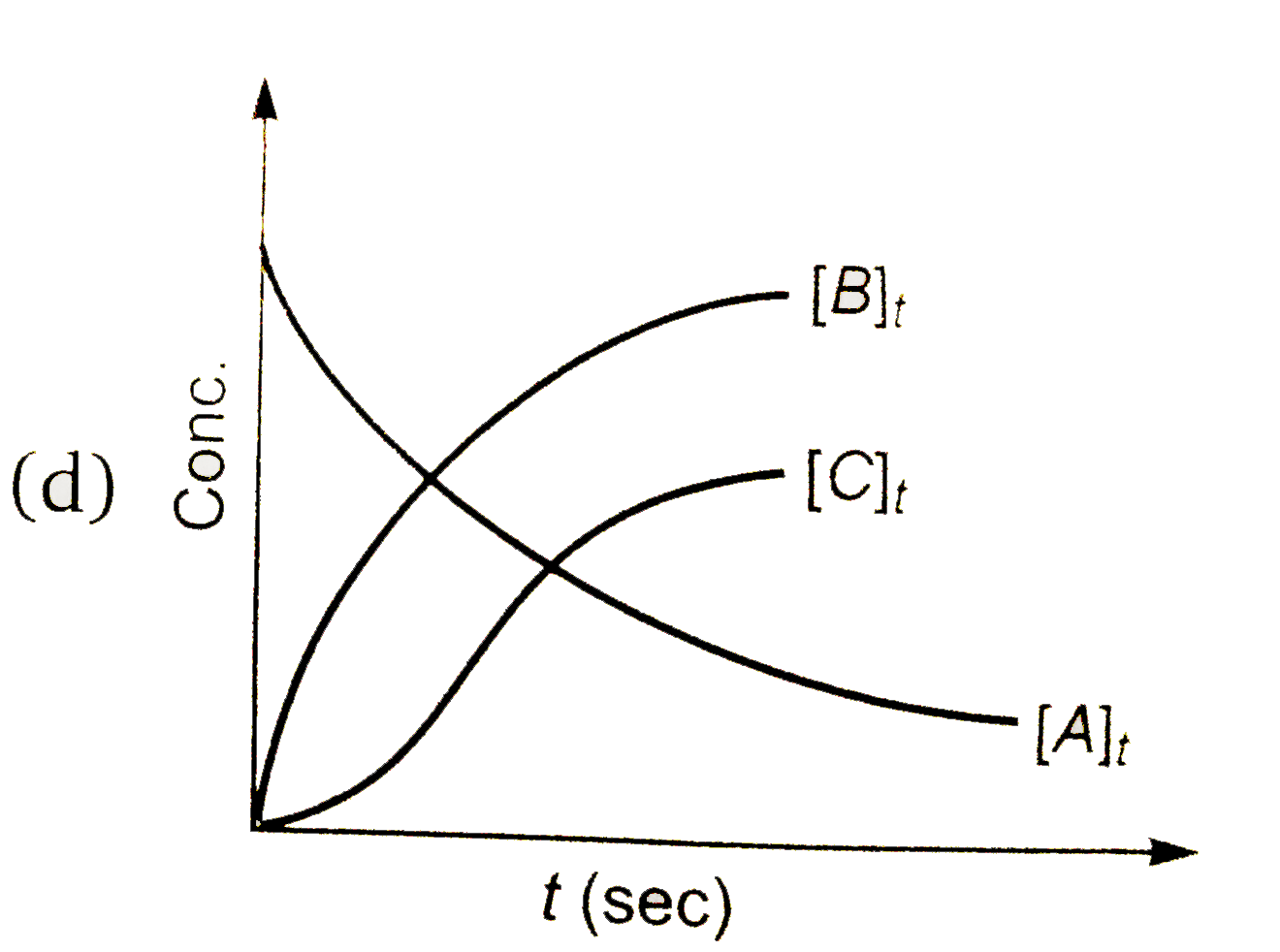Exercise from NARENDRA AWASTHI Chapter 1 CHEMICAL KINETIC & NUCLEAR CHEMISTRY for Class 12
| Class 12 | CHEMISTRY |
| Chapter | CHEMICAL KINETIC & NUCLEAR CHEMISTRY |
| NARENDRA AWASTHI | Exercise |
| Medium | English |
| Academic Year | 2023-2024 |
Question 8
Listed in the table are forward and reverse rate constants for the reaction
2NO(g)⇔N2(g)+O2(g)
Temperature(K)kf(M−1s−1)kb(M−1s−1)14000.291.1×10−615001.31.4×10−5
Select the correct statement:
a) Reaction is exothermic and value of eqilibrium constatnt(Keq) at 1400 K is 3.79×10−6
b) Reaction is endothermic and value of keq 1400 K is 2.63×105
c) Reaction is exothermic and value of keq 1400 K is 2.63×105
d) Reaction is endothermic and value of keq 1500 K is 9.28×104 View SolutionQuestion 22
For the reactionA→B, for which graph between half life (t1/2)and∈itialconcentration(a)oftherectantisgivenbelow<br><imga≤ocr_imageload∈g=lazysrc=https://d10lpgp6xz60nq.cloudfront.net/physics_images/NRA_PHY_CHM_JMA_C07_E01_022_Q01.pngwh=80%mx-autosty≤=background:white;><br>Hencegraphbetween-(d[A])/(dt) and time will be: View SolutionQuestion 28
The reaction of A2 and B2 follows the equation
A2(g)+B2(g)→2AB(g)
The following data were observed
[A2]0[B2]0Initial rate of appearance of AB(g)(inMs−10.100.102.5×10−40.200.105×10−40.200.2010×10−4
The value of rate constatnt for the above reaction is :
a) 2.5×10−4
b) 2.5×10−2
c) 1.25×10−2
d) None of theseView SolutionQuestion 37
When ethyl acetate was was hydrolysedin presemce of 0.1 M HCl, the rate constant was found to be 5.4×10−5s−1. But in presence of 0.1 M H2SO4 the rate constant was found to be 6.25×10−5s−1. Thus it may be concluded that:
a) H2SO4 furnishes more H+ than HCl
b) H2SO4 furnishes less H+ than HCl
c) both have the same strength
d) will depend on concentration of ethyl acetateView SolutionQuestion 54
For a first order homogenous gaseous reaction, A→2B+C
then initial pressure was Pi while total pressure after time 't' was Pt. The right expression for the rate constants k in terms of Pi,Pt and t is :
a) k=2.303tlog(2Pi3Pi−Pt)
b) k=2.303tlog(2Pi2Pt−Pi)
c) k=2.303tlog(PiPi−Pt)
d) None of these View SolutionQuestion 55
The decomposition of azo methane, at certain temperature acccording to the equation (CH3)2N2→C2H6+N2 is a first order reaction.
After 40 minutes from the start, the total pressure developed is found to be 350 mm Hg in place of initial pressure 200 mm Hg of azo methane. The value of rate constant k is :View SolutionQuestion 59
A→B first order reaction A is ooptical active and B is optically inactive. A series of experiment were conducted on a solution of A
Time060min∞optical rotation82∘77∘2∘
assume some imurity is present calculate the otical rotation for 5 hours.)
(Given in 1.066=0.064, e0.16=1.17)View SolutionQuestion 70
For reaction A → B , the rate constant K1=A1(e−Ea1/RT) and the reaction X→Y , the rate constant K2=A2(e−Ea2/RT) . If A1=109, A2=1010 and Ea1=1200 cal/mol and Ea2 =1800 cal/mol , then the temperature at which K1=K2 is : (Given , R=2 cal/K-mol)
a) 300K
b) 300×2.303K
c) 3002.303K
d) None of theseView SolutionQuestion 106
A pure radio-chemical preparation was observed to disintegrate at the rate of 2140 counts/minutes at 12.35 P.M. . At 3.55 P.M. of the same day, the disintegration rate of the sample was only 535 count/minutes. What is the half-life of the material?
a) 50 min
b) 100 min
c) 200 min
d) None of theseView SolutionQuestion 114
Which of the following is incorrect statement ?
a) Stoichiometry of a reaction tells about the order of the elementary reaction.
b) For a zero order reaction. Rate and the rate constant are identical .
c) A zero order reaction is controlled by factors other than concentration of reactants
d) A zero order reaction is an elementary reactionView SolutionQuestion 117
For a first order homogenous gaseous reaction, A→2B+C
then initial pressure was Pi while total pressure after time 't' was Pt. The right expression for the rate constants k in terms of Pi,Pt and t is :
a) k=2.303tlog(2Pi3Pi−Pt)
b) k=2.303tlog(2Pi2Pt−Pi)
c) k=2.303tlog(PiPi−Pt)
d) None of these View SolutionQuestion 118
A hydrogenation reaction is carried out at 500K. If the same reaction is carried out in the presence of a catalyst at the same rate, the temperature required is 400K. Calculate the activation energy of the reaction if the catalyst lowers the activation barrier by 20kJmol−1.
a) 100 kJ/mol
b) 80 kJ/mol
c) 60 kJ/mol
d) none of theseView SolutionQuestion 119
The following mechanism has been proposed for the exothermic catalyzed cmplex reaction:
A+BFast−−→IABk1−−→AB+Ik2−−→P+A
If k1 is much smaller than k2, the most suitable qualitative plot of potential energy (PE) versus reaction coordinates for the above reaction is
a)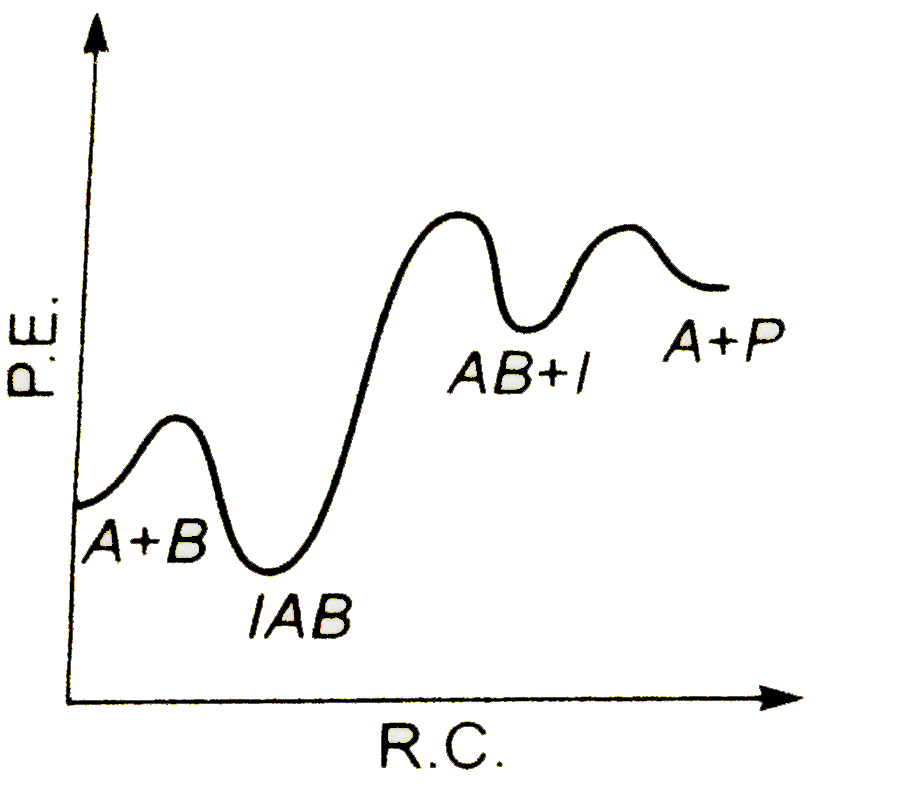 b)
b) 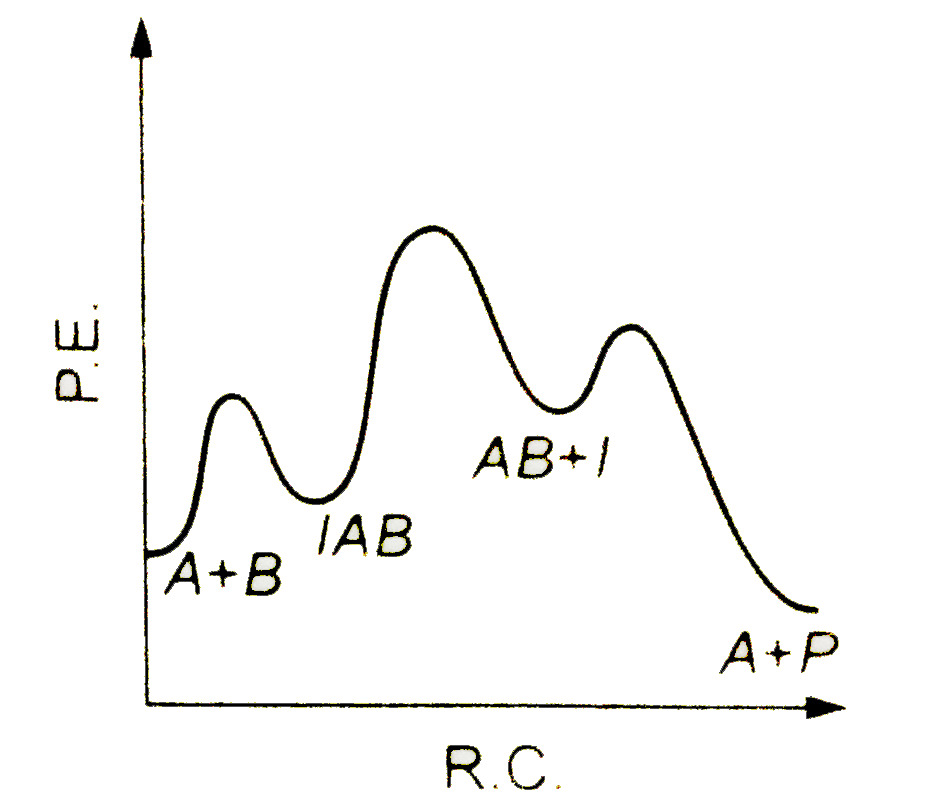
c) d)
d) 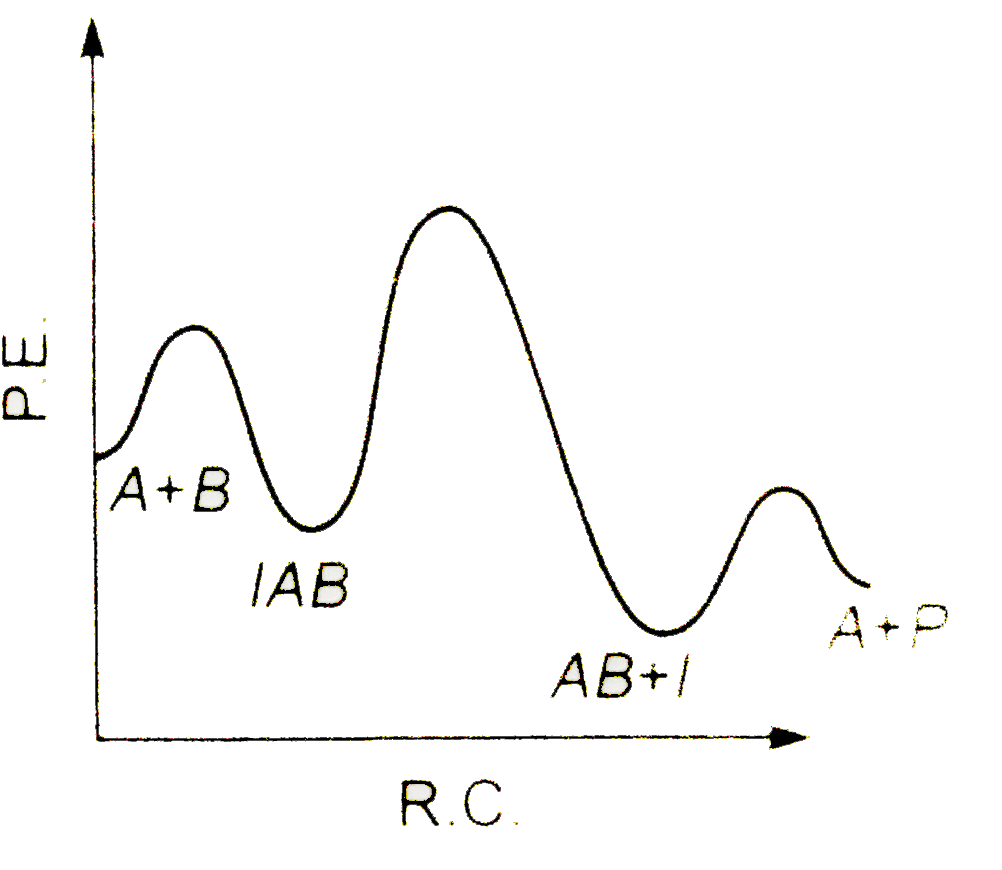 View Solution
View SolutionQuestion 120
A radioactive isotope X with half-life of 693×109 years decay to Y which is stable. A sample of rock from of the moon was found to contain both the elements X Y in the mole ratio 1:7 . What is the age of the rock ?
a) 2.079×1012 years
b) 1.94×1010 years
c) 1.33×109 years
d) 1010 years View SolutionQuestion 122
Two consecutive irreversible fierst order reactions can be represented by
Ak1−−→Bk2−−→C
The rate equation for A is readily interated to obtain
[A]t=[A]0.e−k1t , and [B]t=k1[A]0k2−k1[e−k1(t)−e−k2(t)]
At what time will B be present in maximum concentration ?
a) K1K2−K1
b) 1k1−k2 In k1k2
c) 1k2−k1 In k1k2
d) none of these View SolutionQuestion 124
Two consecutive irreversible first order reactions can be represented by
Ak1−−→Bk2−−→C
The rate equation for A is readily interated to obtain
[A]t=[A]0.e−k1(t) , and [B]t=k1[A]0k2−k1[e−k1(t)−e−k2(t)]
Select the correct statement for given reaction:
a) A decreases linearly
b) B rise to a max. and then constant
c) B rises to a max and the falls
d) The slowest rate of increases of C occuring where B is maxView SolutionQuestion 125
Arrhenius studies the effect of temperature on the rate of a reaction and postulted that rate constant varies with temperature exponentially as k=AeEa/RT . Thuis method is generally used for finding the activation energy of a reaction. Keeping temperature constant, the effect of catalyst on the activation energy has also been studied.
The pre-exponetial factor in the Arrhenius equation of a first order reaction has the unit :
a) molL−1s−1
b) Lmol1s−1
c) s−1
d) dimensionless View SolutionQuestion 126
Arrhenius studies the effect of temperature on the rate of a reaction and postulated that rate constant varies with temperature exponentially as k=Ae−Ea/RT . This method is generally used for finding the activation energy of a reaction. Keeping temperature constant, the effect of catalyst on the activation energy has also been studied.
If x is the fraction of molecules having energy greater than Ea it will be given by :
a) x=−EaRT
b) In x=−EaRT
c) x=eEa/RT
d) Any of theseView SolutionQuestion 127
Arrhenius studies the effect of temperature on the rate of a reaction and postulted that rate constant varies with temperature exponentially as k=AeEa/RT . Thuis method is generally used for finding the activation energy of a reaction. Keeping temperature constant, the effect of catalyst on the activation energy has also been studied.
If the rate of reaction doubles for 10∘C rise of temperature form 290K to 300K, the activation energy of the reaction will be approximately:
a) 40 Kcal mol−1
b) 12 Kcal mol−1
c) 60 Kcal mol−1
d) 70 Kcal mol−1 View SolutionQuestion 128
An important parameter of a photochemical reaction is the quantum efficiency or quantum yield (ϕ) which is defined as
ϕ=moles of the substance reactionmoles of photons absorbed
Absorption of UV radiation decompose acetone according to the reaction
(CH3)2COhv−−→C2H6+CO
The quantum yield of a reaction at λ=330nm is 0.4 . A sample of acetone absorbs monochromatic radiation at λ330mn at the rate of 7.2×10−3Js−1 (given : NA=6×1023,h=6.6×10−34 in S.I unit). The rate of formation of CO(mol/s) is :
a) 2×10−8
b) 8×10−8
c) 8×10−9
d) none of these View SolutionQuestion 129
An important parameter of a photochemical reaction is the quantum efficiency or quantum yield (ϕ) which is defined as
ϕ=moles of the substance reactionmoles of photons absorbed
Absorption of UV radiation decompose acetone according to the reaction
(CH3)2COhv−−→C2H6+CO
The quantum yield of a reaction at λ=330nm is 0.4 . A sample of acetone absorbs monochromatic radiation at λ330mn at the rate of 7.2×10−3Js−1 (given : NA=6×1023,h=6.6×10−34 in S.I unit). The rate of formation of CO(mol/s) is :
a) 2×10−8
b) 8×10−8
c) 8×10−9
d) none of these View SolutionQuestion 130
Radioactive disintegration is a first order reaction and its rate depends only upon the nature of nucleus and does not depend upon external factors like temperature and pressure. The rate of radioactive disintegration (Activity) is represented as
−dNdt=λN Where λ= decay constant, N= number of nuclei at time t, N0 =initial no. of nuclei. The above equation after integration can be represented as
λ=2.303tlog(N0N)
Half-life period of U is 2.5×105 years. In how much time will the amount of U237 remaining be only 25% of the original amount ?
a) 2.5×105 year
b) 1.25×105 years
c) 5×105 years
d) none of these View SolutionQuestion 131
Radioactive disintegration is a first order reaction and its rate depends only upon the nature of nucleus and does not depend upon external factors like temperature and pressure. The rate of radioactive disintegration (Activity) is represented as
−dNdt=λN Where λ= decay constant, N= number of nuclei at time t, N0 =intial no. of nuclei. The above equation after integration can be represented as
λ=2.303tlog(N0N)
Calculate the half-life period of a radioactive element which remains only 1/16 of its original amount in 4740 years:
a) 1185 years
b) 2370 years
c) 52.5 years
d) none of these View SolutionQuestion 132
Radioactive disintegration is a first order reaction and its rate depends only upon the nature of nucleus and does not depend upon external factors like temperature and pressure. The rate of radioactive disintegration (Activity) is represented as
−dNdt=λN Where λ= decay constant, N= number of nuclei at time t, N0 =intial no. of nuclei. The above equation after integration can be represented as
λ=2.303tlog(N0N)
What is the activity in Ci (curie) of 1.0mole plutonium −239 ? (t1/2=24000 years)
a) 1.49 Ci
b) 14.9 Ci
c) 5.513×1011 Ci
d) None of theseView SolutionQuestion 133
Size of nucleus was obtained by the equation r=R0A1/3 , Where r is the radius of nucleus of mass no A. and R0 is a constant whose valie is equal to 1.5×10−15 metre.
(Given : 1 amu = 1.66×10−24g)
What is the density of a nucleus of mass number A ?
a) 43π(1.5×10−15)3 A
b) 1.17×1017kg/cm3
c) 1.17×1017kg/m3
d) none of these View SolutionQuestion 134
Size of nucleus was obtained by the equation r=R0A1/3 , Where r is the radius of nucleus of mass no A. and R0 is a constant whose valie is equal to 1.5×10−15 metre.
(Given : 1 amu = 1.66×10−24g)
Nucleus radius of .6C12 is 3×10−15 metre. What is density ratio of dc/dH2O ?
a) 1.76×1017
b) 1.76×1014
c) 17.6×107
d) 17.6×1017 View SolutionQuestion 139
Select the correct statement(s) :
a) In the reaction .23592U+10n→14056Ba+210n+x,xis9436Kr
b) In the reaction .2311Na+z→2312Mg+10n, the bombarding particle z is deuteron
c) Very large amount of energy is produced during nuclear fusion and nuclear fission
d) In a fission reaction , a loss in mass occurs releasing a vast amount of energyView SolutionQuestion 145
Each question contains STATEMENTS-1 (Assertion) and STATEMENT -2 (Reason).
Examine the statements carefully and mark the correct answer according to the instructions given below:
STATEMENT-1:Molecurity has no meaning for a complex reactions
STATEMENT-2:Molecurity defined only for RDS
a) If both the statements are TRUE and STATEMENT-2 is the correct explanation of STATEMENT-1
b) If both the statement are TRUE but STATEMENT-2 is NOT the correct explanation of STATEMENT-1
c) If STATEMENT-1 is TRUE and STATEMENT-2 is FALSE
d) If STATEMENT-1 is FALSE and STATEMENT-2 is TRUEView SolutionQuestion 146
Each question contains STATEMENTS-1 (Assertion) and STATEMENT -2 (Reason).
Examine the statements carefully and mark the correct answer according to the instructions given below:
STATEMENT-1: An elementry reaction cannot have fractional order.
STATEMETNT-2:Stoichiometric coefficients in an elementary reaction can be fractional.
a) If both the statements are TRUE and STATEMENT-2 is the correct explanation of STATEMENT-1
b) If both the statement are TRUE but STATEMENT-2 is NOT the correct explanation of STATEMENT-1
c) If STATEMENT-1 is TRUE and STATEMENT-2 is FALSE
d) If STATEMENT-1 is FALSE and STATEMENT-2 is TRUEView SolutionQuestion 147
Each question contains STATEMENTS-1 (Assertion) and STATEMENT -2 (Reason).
Examine the statements carefully and mark the correct answer according to the instructions given below:
STATEMENT-1:Concentration of reactant in zero order reaction is constant.
STATEMENT-2: For zero order reaction A→B, successive half life of reaction decrease with the progress of the reaction.View SolutionQuestion 148
Each question contains STATEMENTS-1 (Assertion) and STATEMENT -2 (Reason).
Examine the statements carefully and mark the correct answer according to the instructions given below:
STATEMENT-1: The order of reaction can have fractional value.
STATEMENT-2: For an elementary reaction, the parial orders are determined by the reaction stoichiometryView SolutionQuestion 149
Each question contains STATEMENTS-1 (Assertion) and STATEMENT -2 (Reason).
Examine the statements carefully and mark the correct answer according to the instructions given below:
STATEMENT-1: Catalyst may increase the rate constant to a large extent.
STATEMENT-2:By using suitable catalyst, we can significantly increase yield.
a) If both the statements are TRUE and STATEMENT-2 is the correct explanation of STATEMENT-1
b) If both the statement are TRUE but STATEMENT-2 is NOT the correct explanation of STATEMENT-1
c) If STATEMENT-1 is TRUE and STATEMENT-2 is FALSE
d) If STATEMENT-1 is FALSE and STATEMENT-2 is TRUEView SolutionQuestion 150
Each question contains STATEMENTS-1 (Assertion) and STATEMENT -2 (Reason).
Examine the statements carefully and mark the correct answer according to the instructions given below:
STATEMENT-1: Product is formed only when the required orientation and energy conditions are met.
STATEMENT-2: All collisions between reactants yield the desired product
a) If both the statements are TRUE and STATEMENT-2 is the correct explanation of STATEMENT-1
b) If both the statements are TRUE and STATEMENT-2 is NOT the correct explanation of STATEMENT-1
c) If STATEMENT-1 is TRUE and STATEMENT-2 is FALSE
d) If STATEMENT-1 is FALSE and STATEMENT-2 is TRUEView SolutionQuestion 152
Each question contains STATEMENTS-1 (Assertion) and STATEMENT -2 (Reason).
Examine the statements carefully and mark the correct answer according to the instructions given below:
STATEMENT-1: For exothermic reaction equilibrium constant decrease with increase in temperature.
STATEMETN-2: For exothermic reaction rate constant decrease with decrease in temperature.View SolutionQuestion 153
Each question contains STATEMENTS-1 (Assertion) and STATEMENT -2 (Reason).
Examine the statements carefully and mark the correct answer according to the instructions given below:
STATEMENT -1: If the activation energy of reaction is zero, temperature will have no effect on the rate constant.
STATEMENT-2: Lower the activation energy faster is the raction. View SolutionQuestion 154
Each question contains STATEMENTS-1 (Assertion) and STATEMENT -2 (Reason).
Examine the statements carefully and mark the correct answer according to the instructions given below:
STATEMENT-1: Active complex is an intermediate product.
STATEMENT-2: Active complex is unstable with high vibrational energy.View SolutionQuestion 155
Each question contains STATEMENTS-1 (Assertion) and STATEMENT -2 (Reason).
Examine the statements carefully and mark the correct answer according to the instructions given below:
STATEMENT-1: The pre-exponential factor A has the same units for all reactions.
STATEMENT -2: e−Ea/RT has no unit. View SolutionQuestion 156
Each question contains STATEMENTS-1 (Assertion) and STATEMENT -2 (Reason).
Examine the statements carefully and mark the correct answer according to the instructions given below:
STATEMENT -1: γ−rays have very high penetrating power.
STATEMENT-2: γ-rays are electromagnetic raidations of high energy.View SolutionQuestion 157
Each question contains STATEMENTS-1 (Assertion) and STATEMENT -2 (Reason).
Examine the statements carefully and mark the correct answer according to the instructions given below:
STATEMENT-1: Disintegration of _(1)3H (tritium) is accompanied by β−emission.
STATEMENT-2: Tritium has high n/p ratio.View SolutionQuestion 158
Each question contains STATEMENTS-1 (Assertion) and STATEMENT -2 (Reason).
Examine the statements carefully and mark the correct answer according to the instructions given below:
STATEMENT-1: The life of radiactive object (organic origin) can found with the help of carbon dating.
STATEMENT-2: _(6)14C is a α and β-emitter. View SolutionQuestion 159
Each question contains STATEMENTS-1 (Assertion) and STATEMENT -2 (Reason).
Examine the statements carefully and mark the correct answer according to the instructions given below:
STATEMENT-1: Neutron are the best bombarding particles.
STATEMENT-2: Neutrons are neutral particles.View SolutionQuestion 160
Each question contains STATEMENTS-1 (Assertion) and STATEMENT -2 (Reason).
Examine the statements carefully and mark the correct answer according to the instructions given below:
STATEMENT-1: Nucleus does not contain fee electrons, yet it emit beta-particles
STATEMENT-2: At high n/p ratio, one neutron supposed to give 1 proton and 1 e−(β).View SolutionQuestion 161
Each question contains STATEMENTS-1 (Assertion) and STATEMENT -2 (Reason).
Examine the statements carefully and mark the correct answer according to the instructions given below:
STATEMENT-1: Rate of disintegration of thorium increases with the increase in moles of thorium.
STATEMENT-2: Rate of disintegration does not depend upon temperature, pressureView SolutionQuestion 164
Carbon monoxide reacts with O2 to form CO2: 2CO(g)+O2(g)→2CO2(g)
Infromations about this reaction are given in the table below.
[CO]mol/L[O2]mol/LRate of reaction (mol/L.min)0.020.024×10−50.040.021.6×10−40.020.048×10−5
What is the value for the rate constant for the reaction in properly related unit? View SolutionQuestion 166
For any acid catalysed reaction, AH+−−→B
half- life period is independent of concentration of A at given pH. At definite concentration of A half- time is 10min at pH=2 and half- time is 100 min at pH=3. If the rate law expression of reaction is r=k[A]x[H+]y then calulate the value of (x+y).View Solution
All Exercises from NARENDRA AWASTHI Class 12 CHEMISTRY CHEMICAL KINETIC & NUCLEAR CHEMISTRY
- Exercise
- Level 1 (Q.123 To Q.150)
- Level 1 (Q.3 To Q.32)
- Level 1 (Q.33 To Q.62)
- Level 1 (Q.63 To Q.92)
- Level 1 (Q.93 To Q.122)
- Level 2
- Level 2 (Q.3 To Q.32)
- Level 2 (Q.33 To Q.35)
- Level 3 - Assertion - Reason Type Questions
- Level 3 - One Or More Answers Are Correct
- Level 3 - Passage
- Level 3 - Subjective Problems

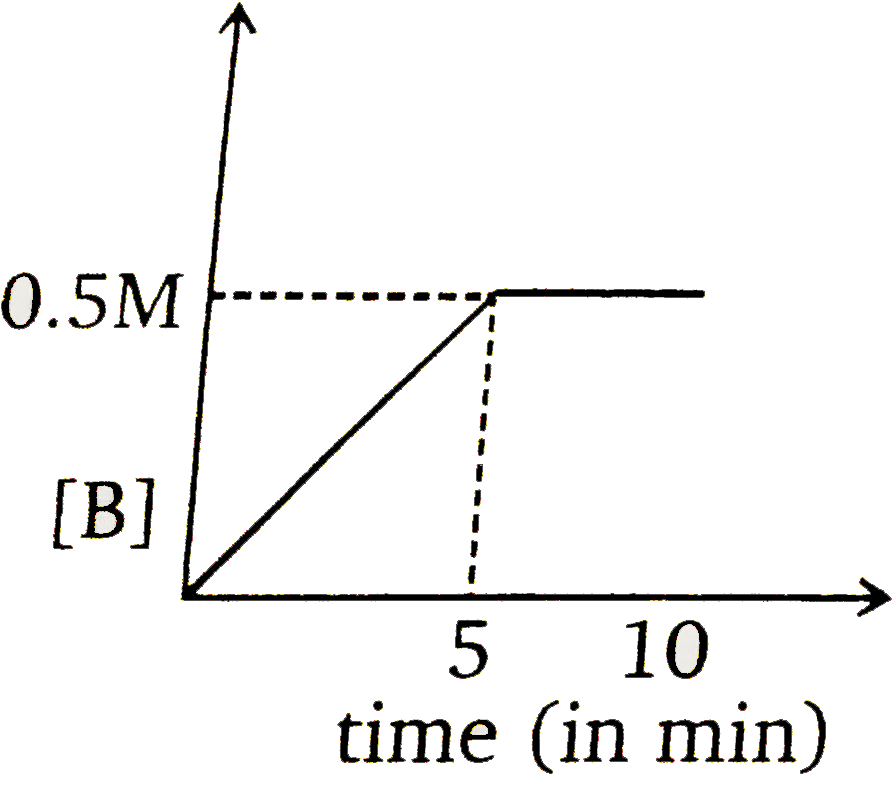 b)
b) 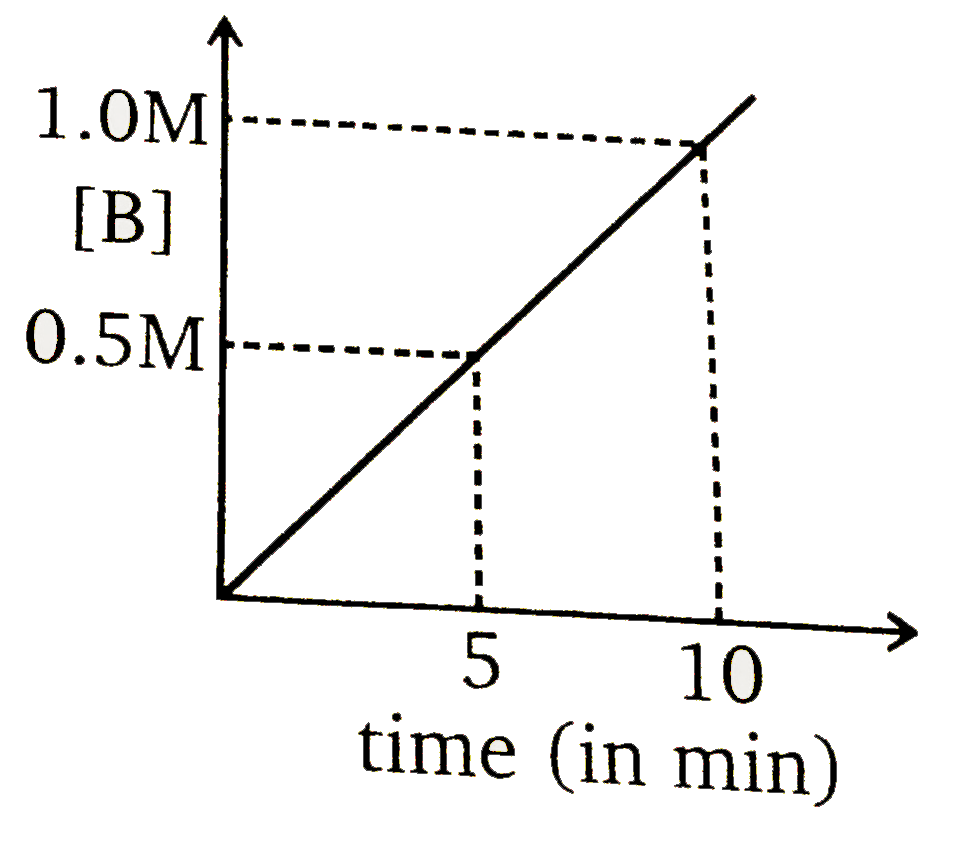
 d)
d) 
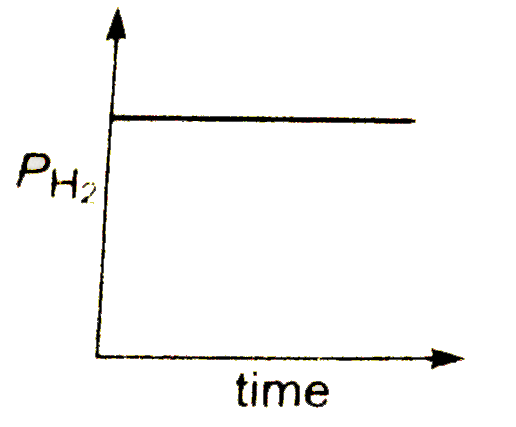 b)
b) 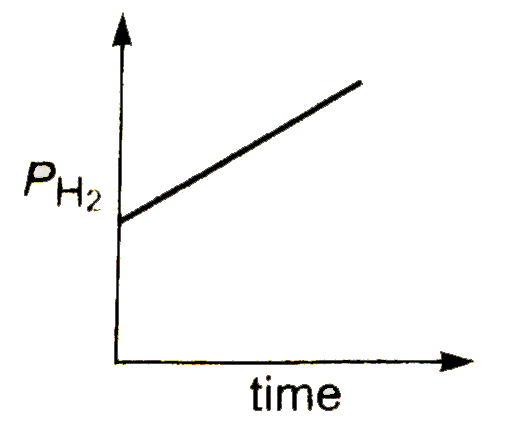
 d)
d) 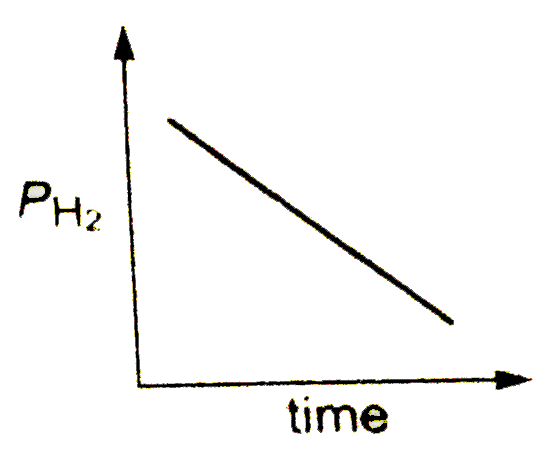


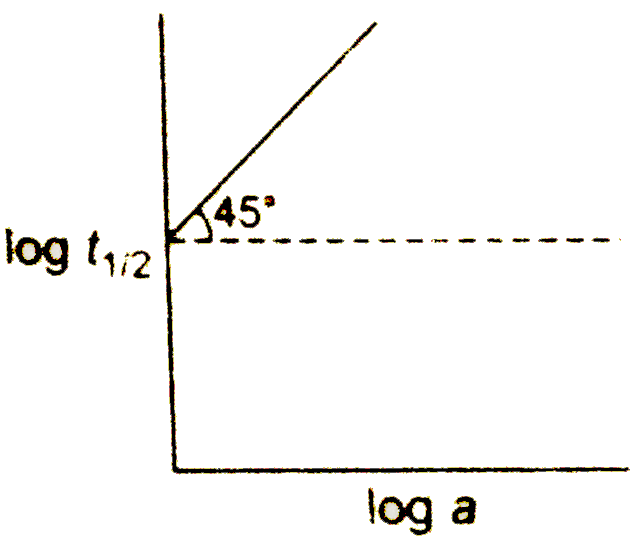
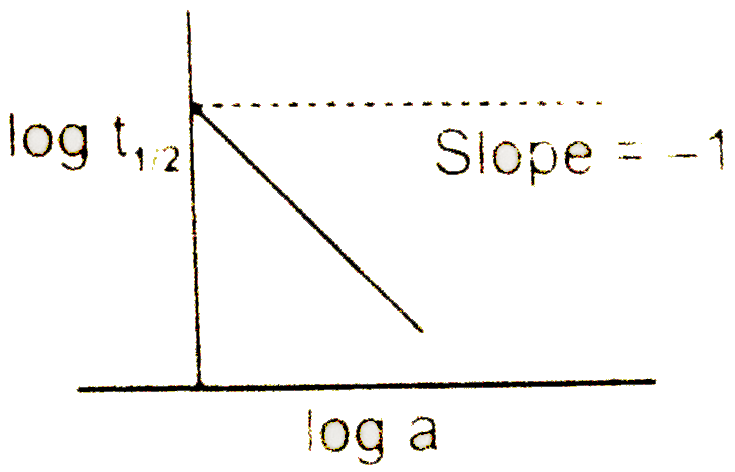

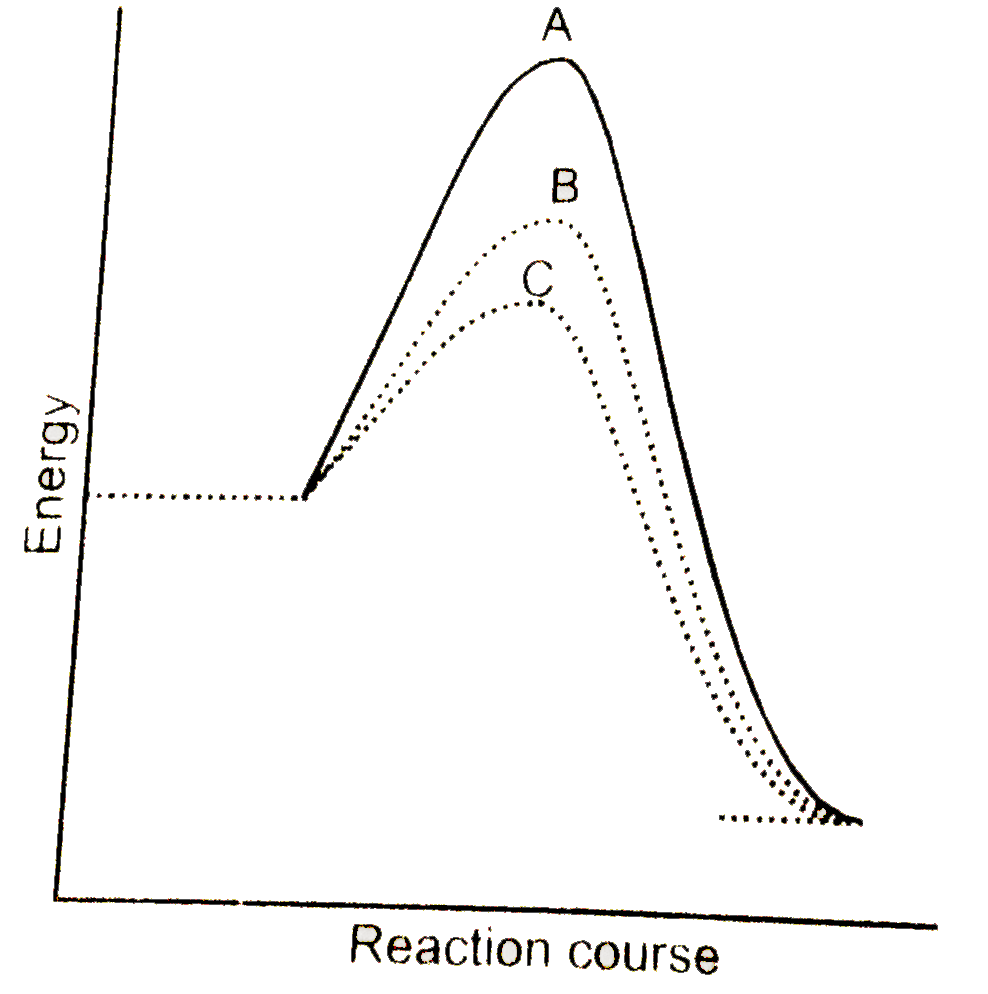
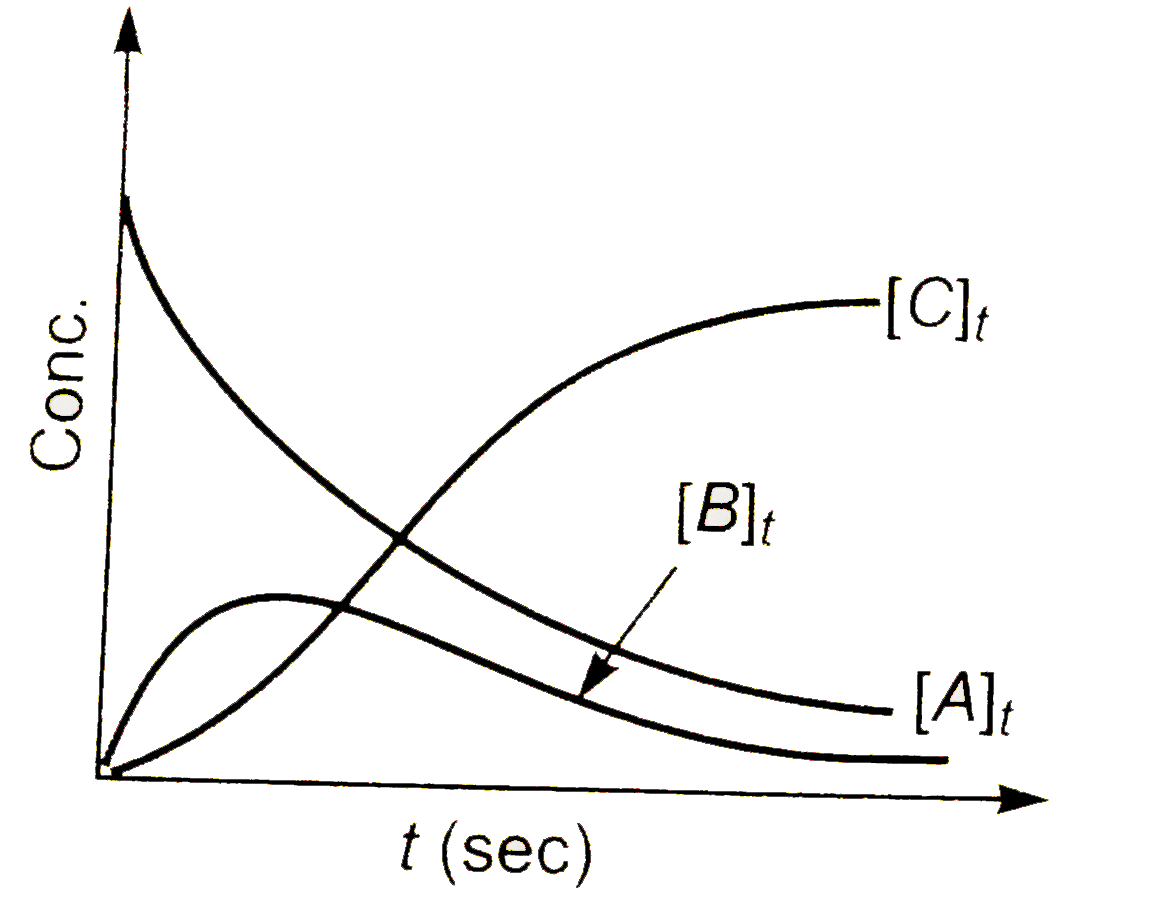 b)
b) 
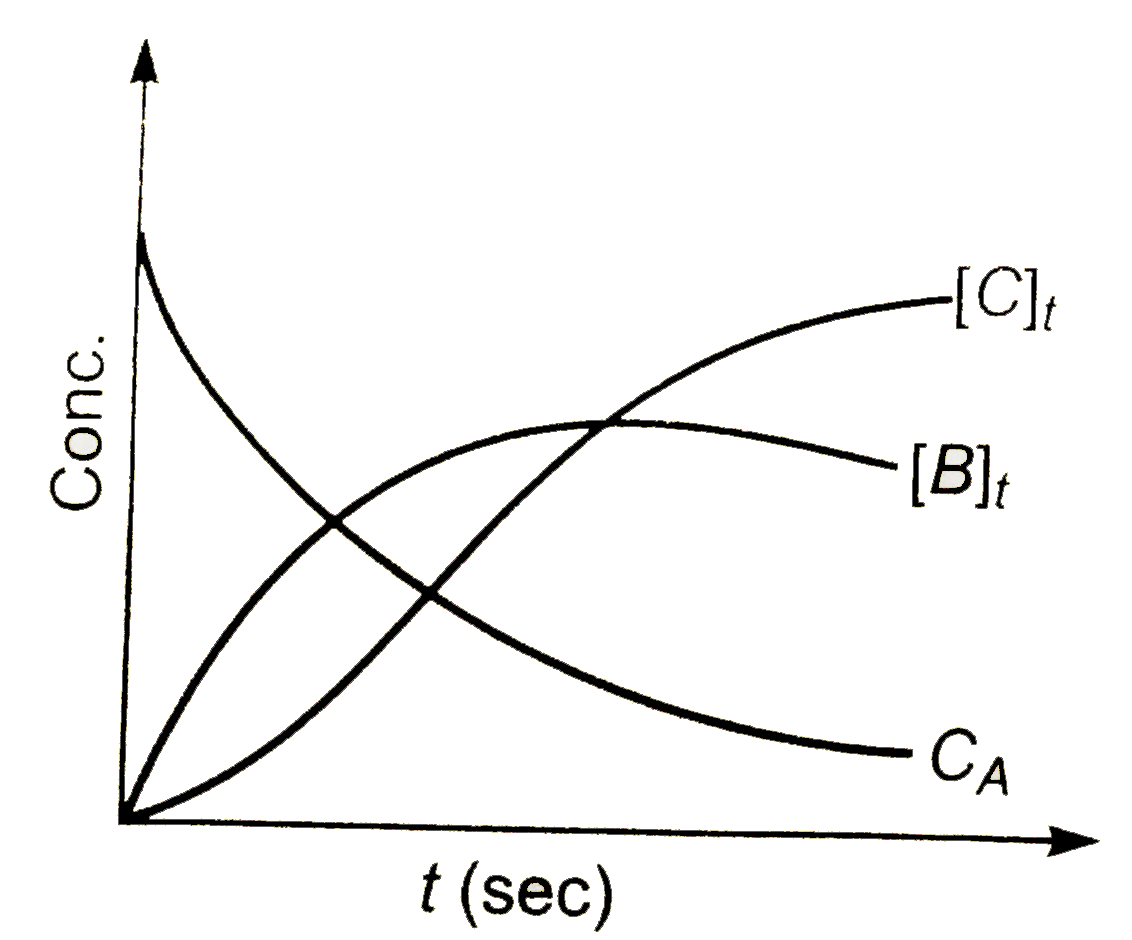 d)
d) 